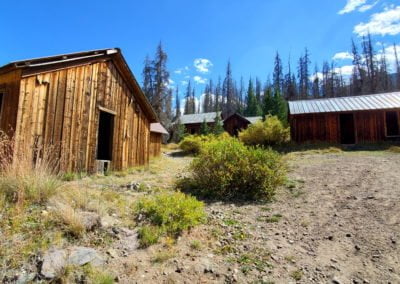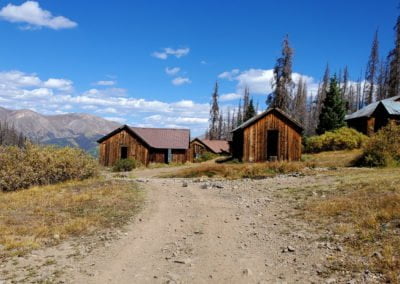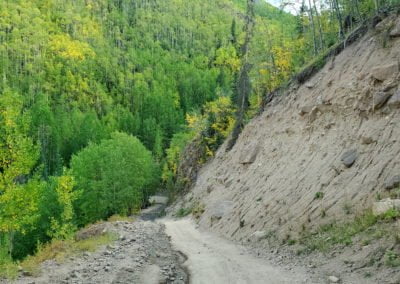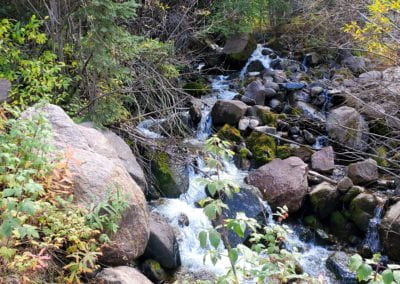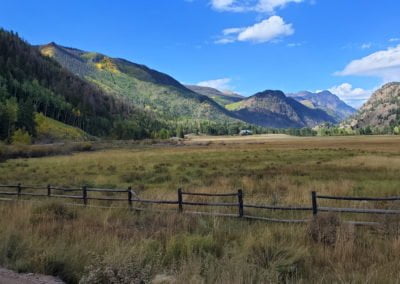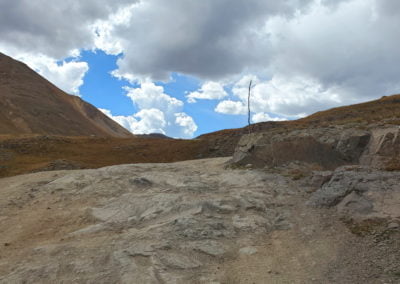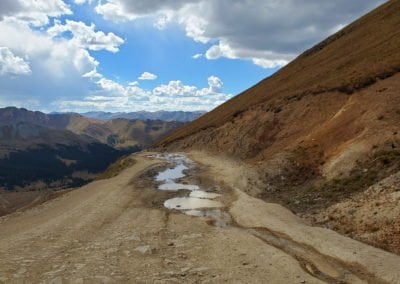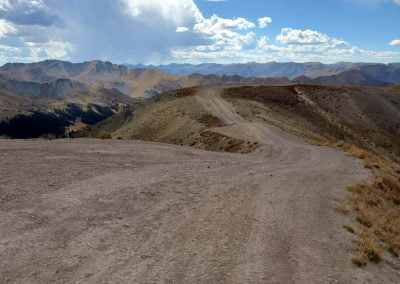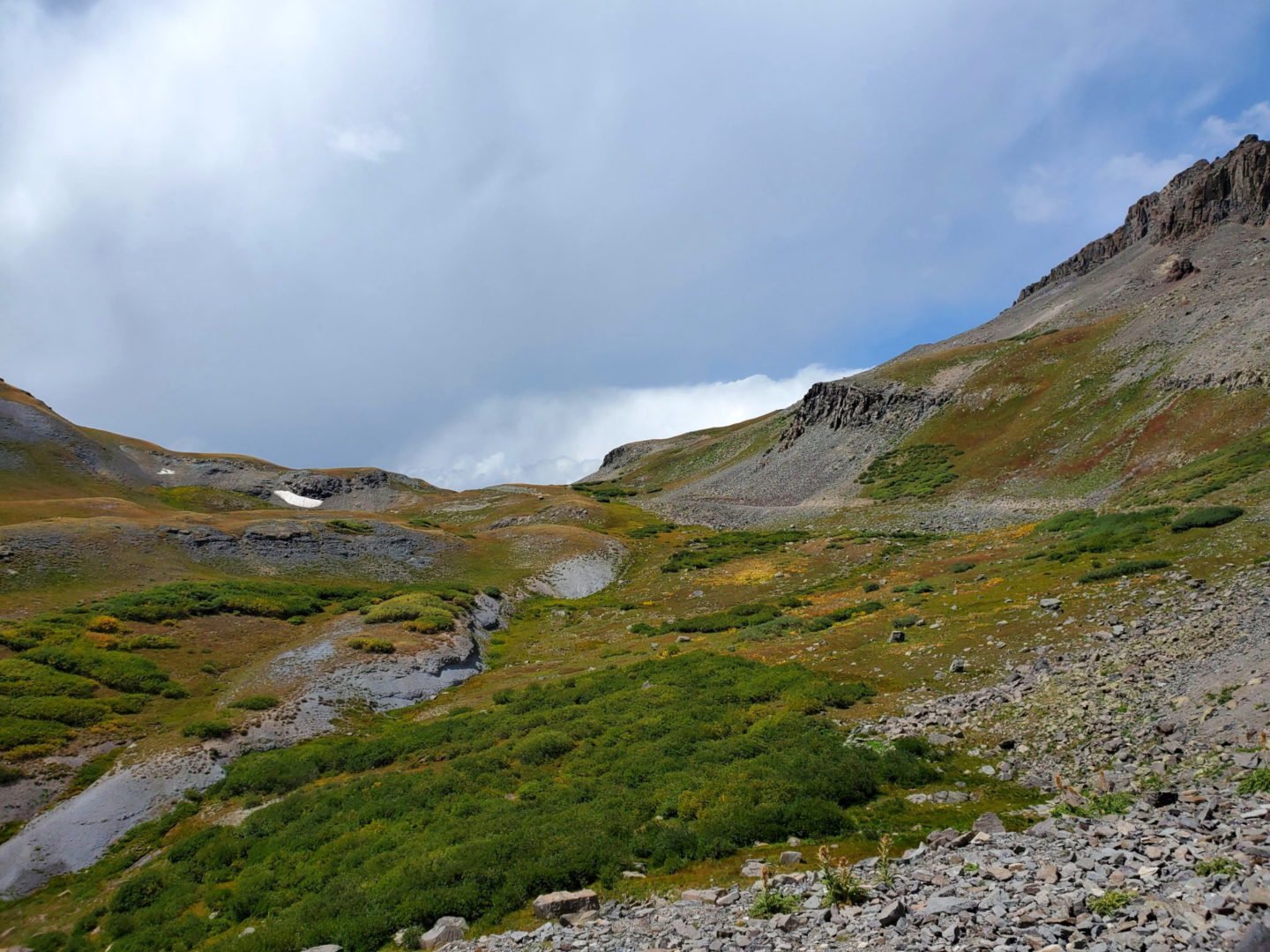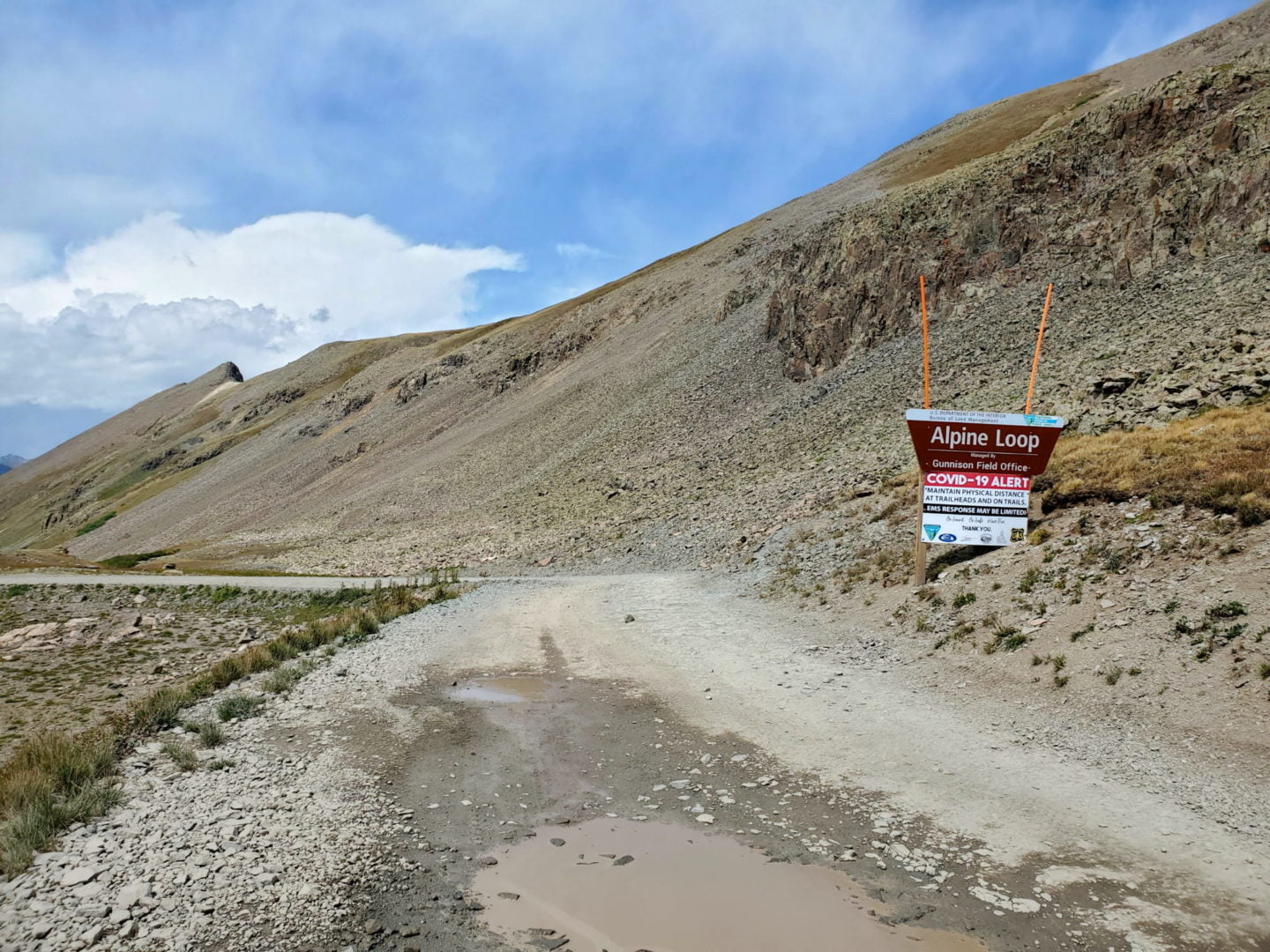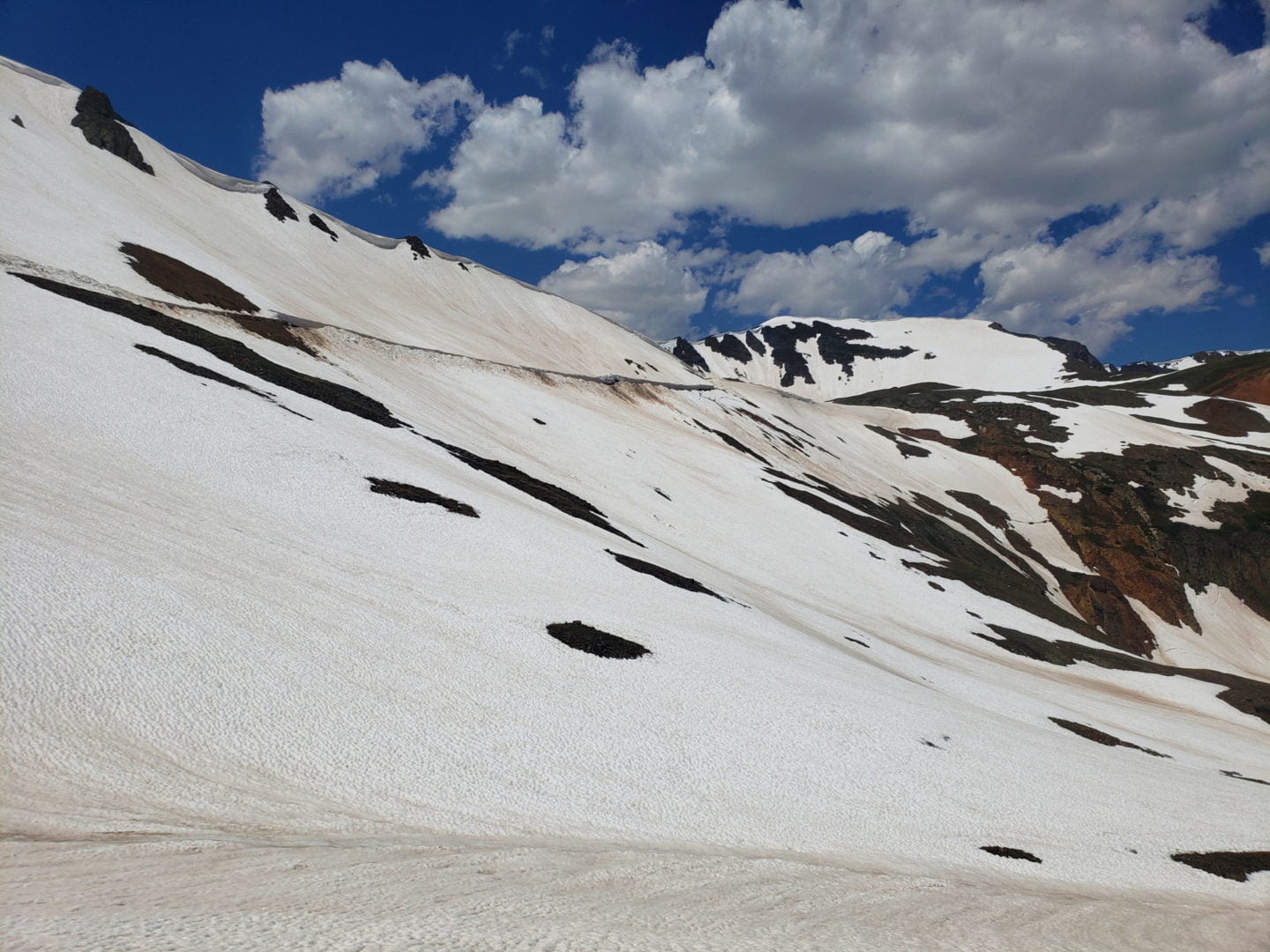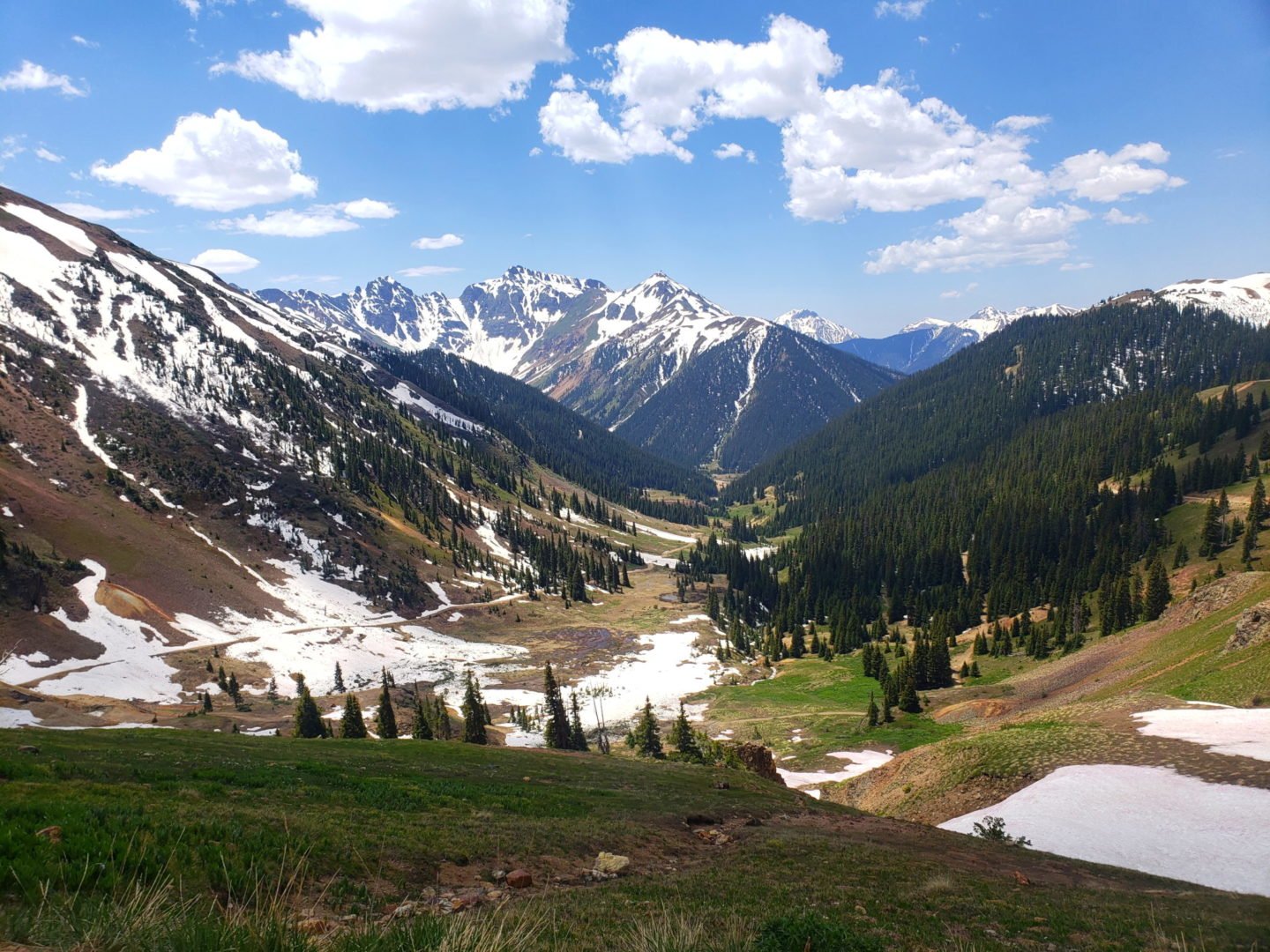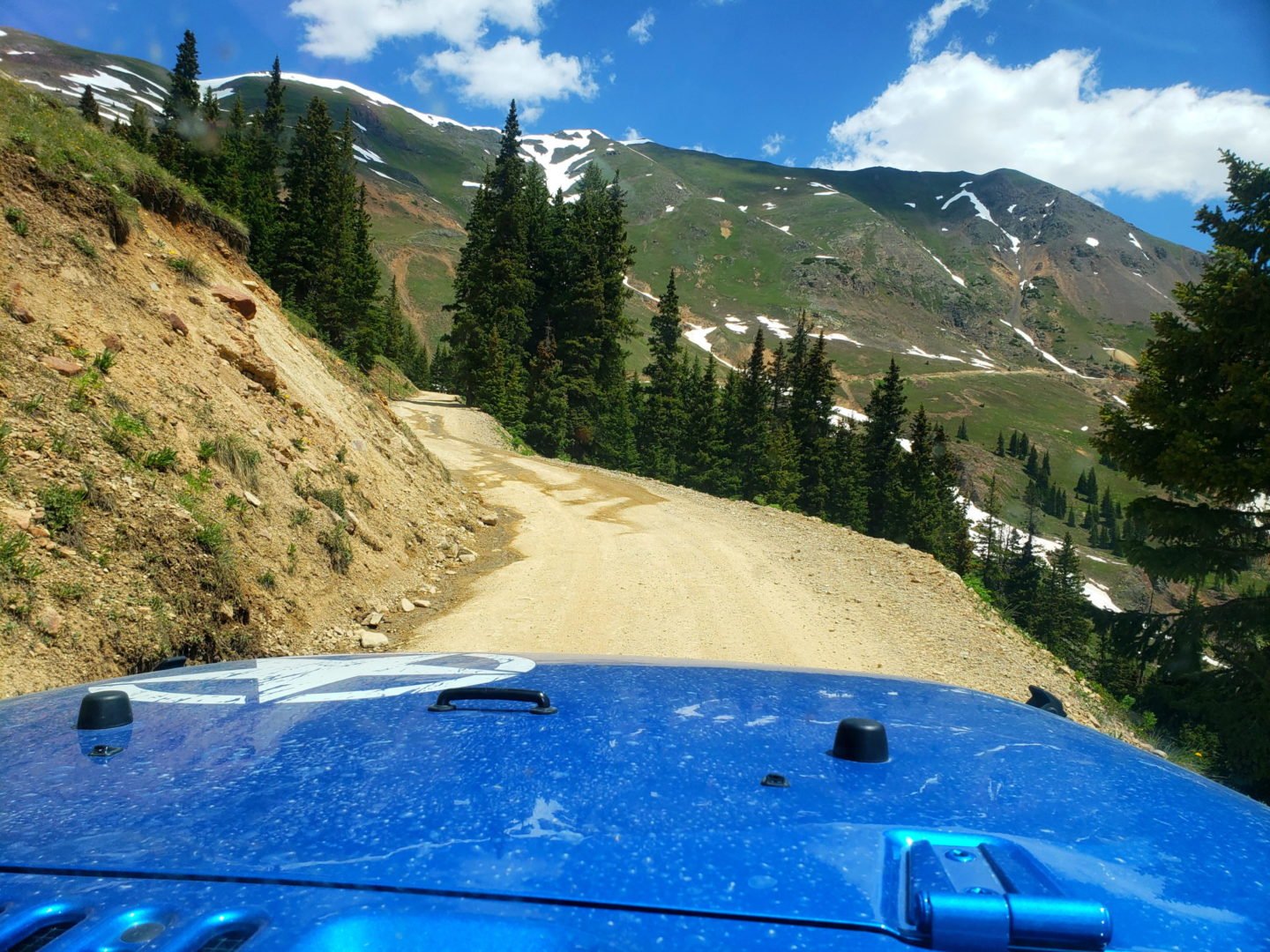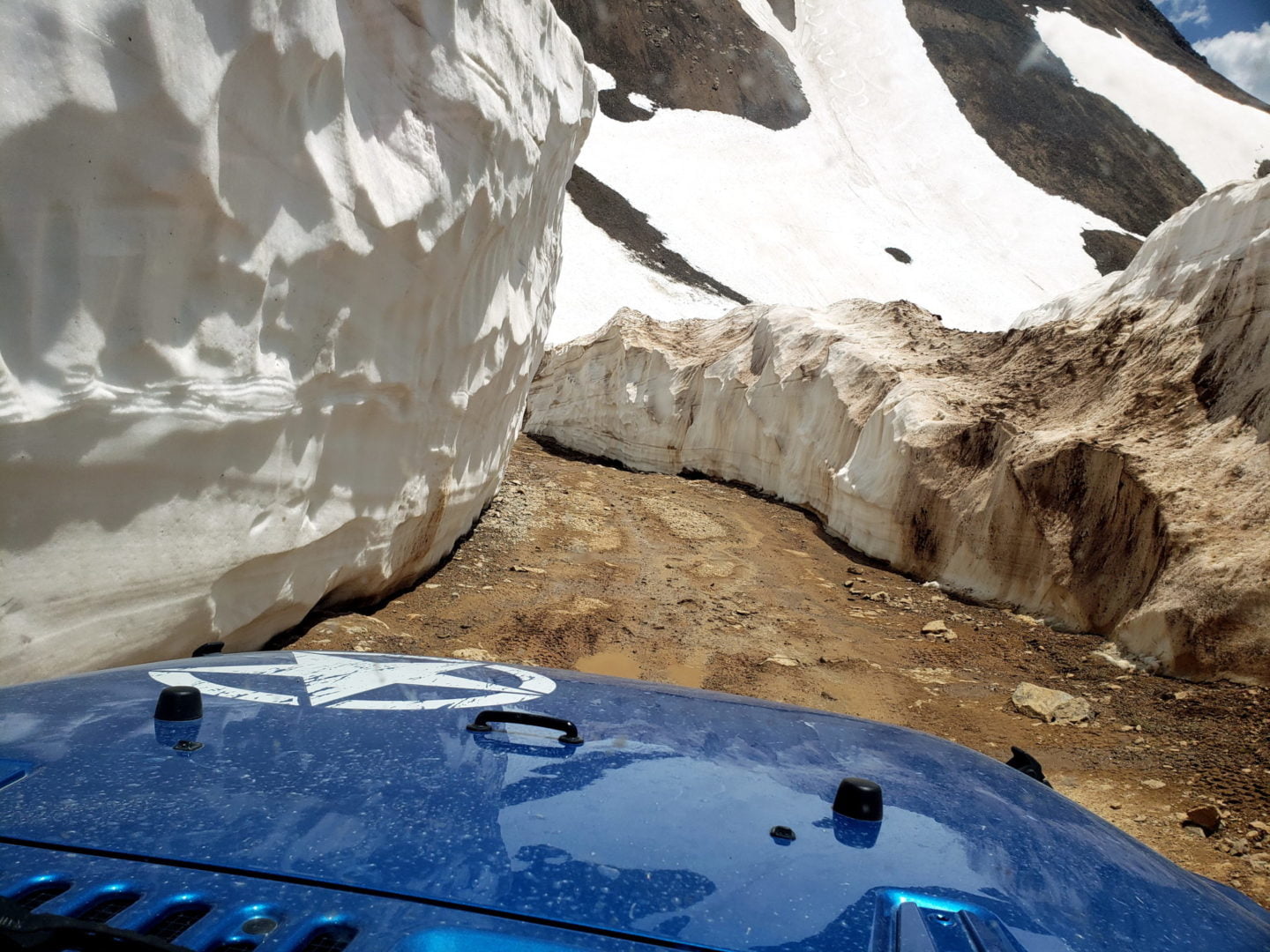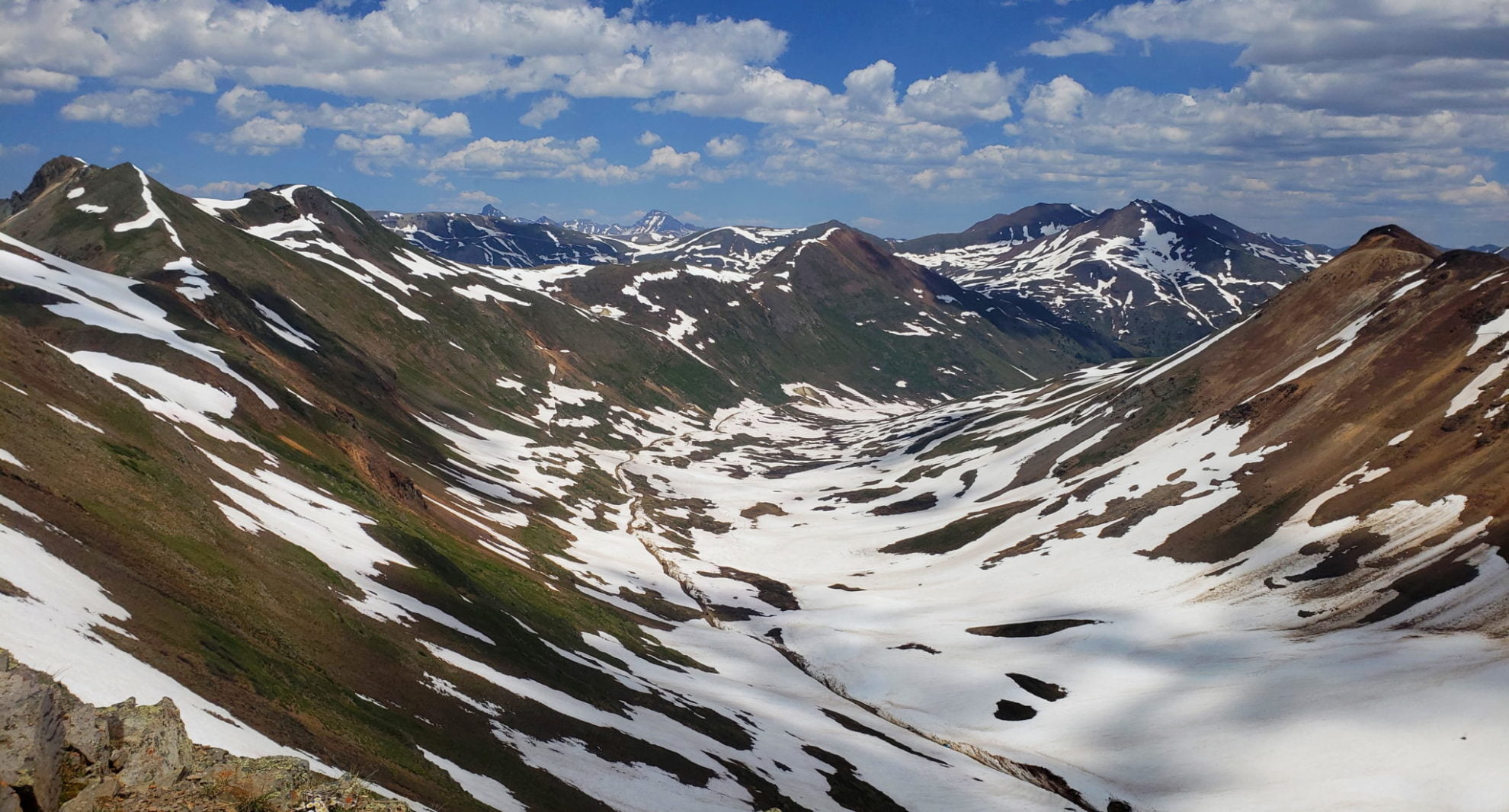
Wager Gulch (12,350′), San Juan Range
Wager Gulch (12,350′), San Juan Range
The road up Wager Gulch (high-clearance 4-wheel drive vehicle recommended), leads to the remnants of the abandoned mining town of Carson, on the way up to the Continental Divide and beyond. Founded in 1889, Carson reached its peak at the turn of the century when some 500 miners worked the mountain. Carson fell victim to the harsh winters of Colorado, being situated almost directly on the Continental Divide. It was considered one of the most inaccessible mining camps in Colorado. To access, take Wager Gulch road located south of Lake City, immediately off the Alpine Loop.
While in the area you may also want to explore Hurricane (12,730′) and California Pass (12,960′) which intersect further northwest along the Alpine Loop. Stony Pass provides a route to the headwaters of the Rio Grande river.
Trail Stats
- Trailhead: Lake City
- Round trip: 30 miles / 48 km (moderate difficulty)
- Elevation: 8,872′ – 12,350′ / 2,704 m – 3,764 m
- County: Hinsdale
- National Forest: Gunnison
- Wilderness: Handies Peak
Trail Pictures
View of the southern side of the Continental Divide
View of the southern side of the Continental Divide
FS 821 on the southern side of the Continental Divide
FS 821 on the southern side of the Continental Divide
Vehicles allowed on a short section of the Colorado Trail
Vehicles allowed on a short section of the Colorado Trail
Heading north, back to Carson over the Continental Divide
Heading north, back to Carson over the Continental Divide
The road above Carson climbing to the Continental Divide
The road above Carson climbing to the Continental Divide
Carson, situated just below the Continental Divide
Carson, situated just below the Continental Divide
GPS Route with Elevation
Video Tour
Trail Directions
From Lake City enter the Alpine Loop on County Road 30. From there take the Wager Gulch Rd turnoff heading south.
As you start Wager Gulch road continue uphill following Wager Creek. Continue on switchbacks as you climb above the creek and head through the forest. Stay on the main road.
After numerous switchbacks the road will cross an open area of the gulch with Carson Mountain to the west. At the next intersection the left road will take you to the ghost town of Carson, which is visible just across Wager Creek. There is an area to park and explore the buildings. Keep in mind that they are private property so repect the property. A short distance up the gulch from the town are the tailings of two mines. The road will top out on the Continental Divide and descend southward.
Trailhead Directions








